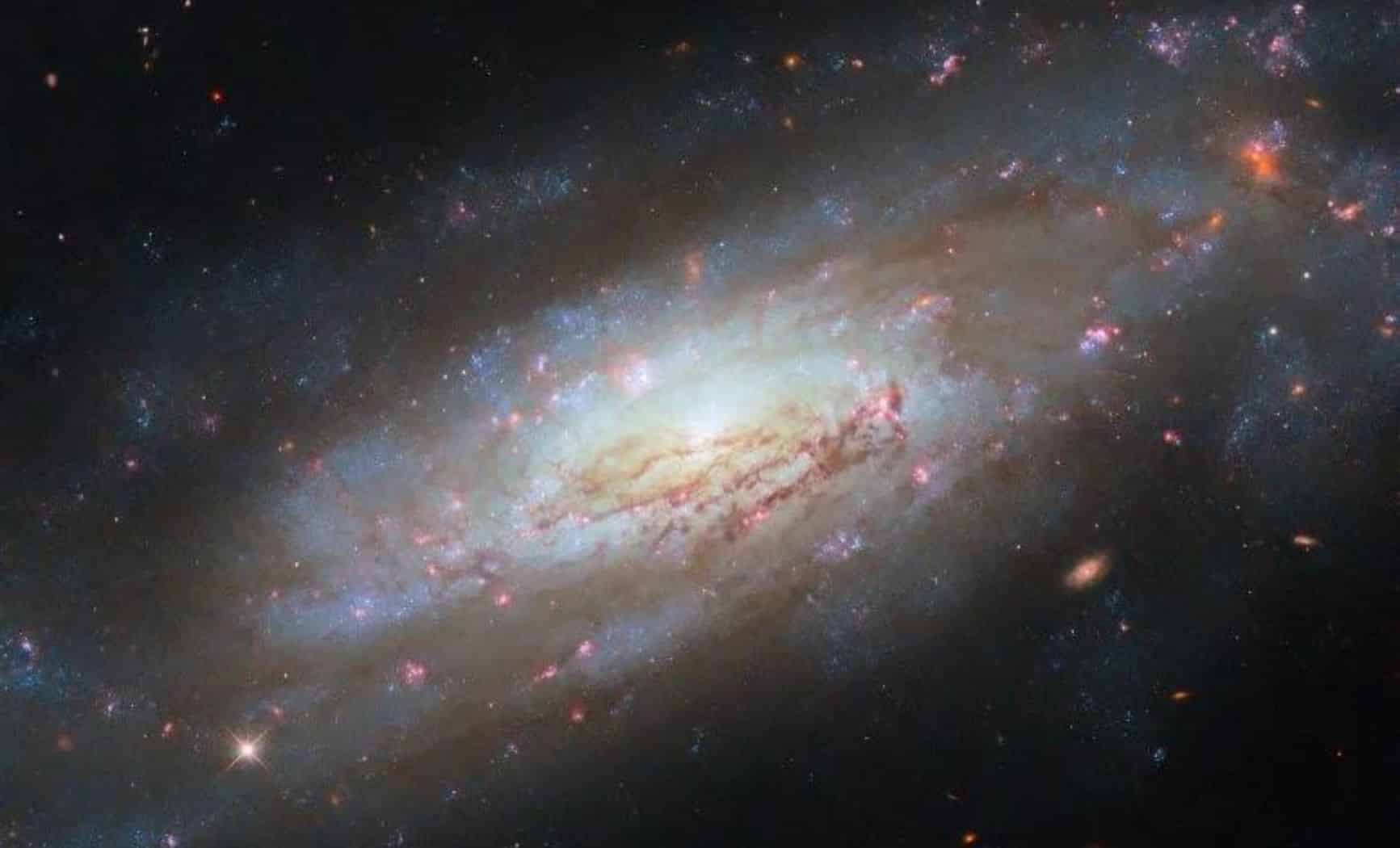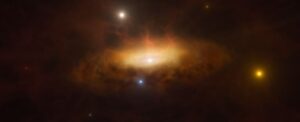NASA/ESA’s Hubble Space Telescope recently captured a breathtaking image of NGC 4951, a spiral galaxy located approximately 49 million light-years away in the constellation Virgo.
This image, showing the galaxy in remarkable detail, provides valuable insight into the star formation processes and energy dynamics in galaxies.
The high-resolution image captured by Hubble offers a glimpse into the complex workings of one of the most fascinating galactic formations in the universe, contributing to our broader understanding of cosmic evolution.
Revealing the brilliance of NGC 4951
In this new image, Hubble highlights the complex structure of NGC 4951, revealing its glowing core surrounded by spinning arms and glowing pink star-forming regions. The galaxy aka AGC 530015, IRAS 13025-0613or LEDA 45246spans about 65,000 light-years across, making it an important structure within the constellation Virgo.
Discovered on April 17, 1784 by a German-born British astronomer William Herschel, NGC 4951 has been the subject of intense study and interest ever since. The galaxy’s large diameter and its position in the constellation Virgo make it a remarkable feature of our night sky, and its dynamic properties offer a wealth of information for astronomers studying the behavior and structures of galaxies.
The science behind the Hubble image
The image of NGC 4951 was created using Hubble observations Wide Field Camera 3 (WFC3) in the ultraviolet, infrared and optical part of the spectrum. This advanced instrument allows astronomers to capture images at different wavelengths, revealing different aspects of the galaxy’s structure and composition.
The final image is based on data obtained through six different filters, with colors assigned to each monochromatic image associated with a separate filter. This method allows astronomers to visualize the galaxy at different wavelengths, highlighting features that would otherwise remain invisible in a single spectrum. The combined data from these filters creates a comprehensive and detailed image that helps scientists analyze and understand the complex interactions within NGC 4951.
A study of star formation and feedback processes
Captured as part of a study of the motion of matter and energy in nearby galaxies, this image reflects the ongoing cycle of star formation in NGC 4951. In this cycle, galactic gas coalesces into molecular clouds, which then collapse to form new stars. These nascent stars emit powerful radiation and stellar winds, dispersing the surrounding clouds in a process known as feedback.
The dispersed gas then moves across the galaxy, eventually merging to form new molecular clouds elsewhere, perpetuating the cycle of star formation. This feedback mechanism is crucial because it regulates the rate of star formation in the galaxy and determines how quickly the galaxy uses up its gas reserves. By studying these processes, astronomers can gain insight into the life cycle of galaxies and the factors that influence their growth and evolution over billions of years.
The importance of understanding galactic evolution
Understanding the evolution of galaxies as NGC 4951 depends on studying the various components within them, including nebulae, stars, and star clusters. By tracking the formation and behavior of these components, astronomers can piece together the history and future trajectory of a galaxy. The detailed observations provided by Hubble are particularly valuable for this purpose.
Hubble has always excelled at measuring populations of stars, providing data on their age, composition and distribution. In case of NGC 4951, tracing the distribution of gas and star formation rates helps scientists understand the dynamical processes that shape galaxy evolution. This understanding is critical to developing models of galaxy formation and predicting how galaxies like NGC 4951 will evolve on cosmic time scales.
The energetic nature of NGC 4951
NGC 4951 is classified as a Seyfert Galaxy, a type of galaxy known for having an extremely bright and energetic core. This active galactic nucleus (AGN) is a region in the center of the galaxy that emits a significant amount of radiation, often overshadowing the rest of the galaxy. AGN activity is driven by the accretion of matter onto a supermassive black hole at the center of the galaxy.
As matter spirals into the black hole, it heats up and emits large amounts of energy, creating the bright core seen in the images. This energetic activity affects the entire galaxy, as the radiation and outflow of AGN can affect star formation and the distribution of gas throughout the galaxy. The image captured by Hubble demonstrates the energetic nature of NGC 4951, showing a bright core surrounded by rotating arms and regions of intense star formation. The presence of thick dust lanes and luminous star-forming regions further highlights the dynamic processes in the galaxy.
The stunning image of NGC 4951 captured by the Hubble Space Telescope not only provides a visual delight, but also improves our understanding of the complex processes that drive galactic evolution. As Hubble continues to explore the universe, it brings us closer to unraveling the mysteries of galaxies far beyond our own. Each new image and data set collected by Hubble adds to our knowledge, helping scientists refine their models and theories of the cosmos. Continued study of NGC 4951 and similar galaxies will undoubtedly continue to yield important discoveries, enriching our understanding of the vast and complex structure of the Universe.



